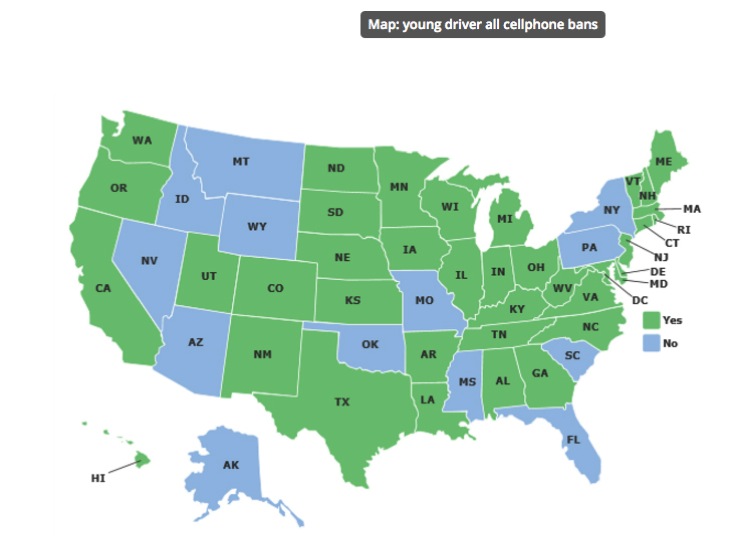Driving distracted — is it worth the risk?
Because time is an increasingly limited commodity in our fast paced world, many people multitask while driving. On any given day a multitude of drivers across the country can be found using their commutes to eat or put on makeup. Even more drivers will spend time looking at the screen of their smartphone while they are simultaneously attempting to drive. These driving habits all present a possible danger by temporarily removing a driver’s focus from the road ahead creating a hazardous condition commonly known as “distracted driving”.
In today’s world of technology where our mobile devices have taken a significant role in our day-to-day lives, there exists a constant temptation to use a smartphone while driving in an attempt to keep the familiar information stream flowing. Tasks associated with using a smartphone while driving are now responsible for thousands losing their lives throughout the country. However, of all smartphone related tasks texting while driving is the most dangerous, and is responsible for creating the most distracted driving accidents and fatalities.
The factor that makes any activities related to texting unsafe is the slowing down or delaying of reaction time. When drivers read or send a text message, their reaction time doubles. Sending or receiving a text requires looking away from the road for an average of 4.6 seconds according to Distraction.gov, the official U.S. government website for distracted driving. At a speed of only 30 miles per hour, a vehicle will have traveled a distance approximately 202 feet in 4.6 seconds of time. It’s safe to assert that no one would agree to drive this far without looking at the road and yet people willingly do it everyday…probably without realizing what is occurring.
Well-documented statistics clearly show the consequences of trying to multitask while driving, and they are more serious than most would imagine. According to information from the National Highway Traffic Safety Administration (NHTSA), 9 people are killed each day in the United States as a result of distracted driving. Every day 1,123 people are injured in accidents as a result of texting while driving.
The reaction to this unacceptable reality has caused many states to take a stand against distracted driving by instating “hands-free” laws, which prohibit the use of devices while behind the wheel.**
**Refer to nationwide maps and corresponding color key for information on a state-by-state basis regarding distracted driving laws (Maps and data provided by The Insurance Institute for Highway Safety)



Teenage drivers are statistically the most likely group to text while driving. Although 85% of teens surveyed (NHTSA survey) support a ban on texting while driving and agree with the nationwide new laws that prohibit it, the problem is still very pressing across this generation. A prevalent attitude among this group is that despite what real world data shows, 77% of young adult drivers are somewhat to very confident that they can safely text while driving.
Surprisingly, teenage drivers are not the only demographic group whose actions do not seem to align with their beliefs. According to the AAA Foundation for Traffic Safety, an estimated 40% of adults ages 40 through 59 years old admit to using their phone in the last month while driving. This shows that a simple notion of knowing what is correct doesn’t necessarily lead to the appropriate actions.
In order to effectively lower the risk of being involved in a collision caused by distracted driving, a few simple steps can be taken to greatly reduce the odds of the unwanted consequences that can occur while behind the wheel of a moving vehicle:
Option one: Turn off your cell phone. If there is a good reason it must be kept on but responding to a notification is too much of a temptation, your phone can be also switched to mute.
Option two: If you must have a phone or other device on while driving for reasons like navigation or streaming music, using a phone mount is the solution to glancing down at your device to view the screen. When a phone or GPS is properly mounted, it should be at eye level and out of the driver’s field of vision.
Distracted driving is not likely to go away anytime soon – if ever, despite the life altering consequences that are always a possibility. Legislation with painful penalties may motivate some people to change their ways, but we believe increasing the awareness of the consequences will have the best results. Every life is unique and important; therefore consideration should always be given as to how one person’s actions may affect someone else. Here at Maxx Mount it has always been our desire to make a positive difference in people’s lives with our products. We encourage everyone to make every effort to drive safe and drive smart.




